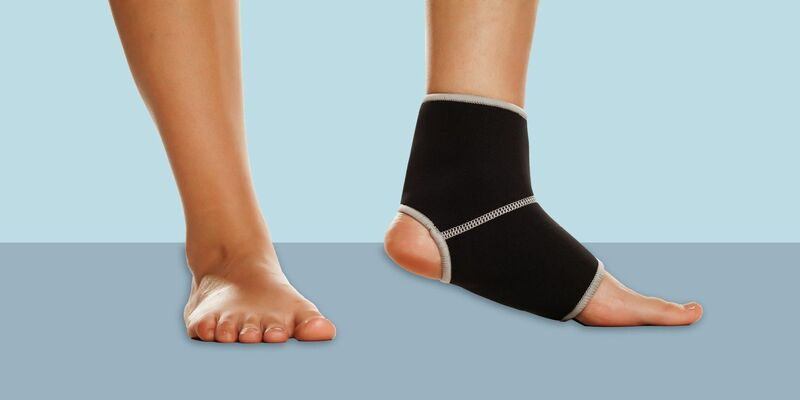You Must Be Aware Of How Ankle Braces Relieve Pain And Swelling
Oct 30, 2023 By Nancy Miller
Nothing may ruin a trip or tennis tournament faster than rolling or hurting your ankle. But then that happens all the time: Ankle sprains are pretty standard; the American Orthopaedic Foot and Achilles Society estimates that over 25,000 individuals sustain one daily. The good news is that an ankle brace may indeed be able to provide some relief. Assistant professor of podiatry somewhere at the University of Texas Medical Branch Chanel Perkins, DPM, explains that "wearing an ankle brace after such an injury could very well help support the ankle but instead foot whilst also providing an outermost layer of assistance to facilitate healing of something like the injured structural components" (ligaments but instead muscle tendons). Ankle braces, she tells Health, may help avoid "abnormal biomechanics" in the foot, such as those that lead to pain and swelling.
How To Properly Use An Ankle Brace
In contrast to common opinion, podiatrist Priya Parthasarathy, DPM of Maryland, advises waiting until after an accident to use an ankle brace. The only time you should wear a foot brace is "sometimes," as Dr Parthasarathy puts it, "while hiking on uneven terrain or playing sports with a lot of lateral movement." This is true even if you are accident-prone or have experienced diagnosed having chronic ankle instability. So, sometimes using an ankle brace to protect yourself from harm is OK. However, ankle braces may do more damage than benefit if worn incorrectly. "The constant support would prevent the surrounding muscles from starting strengthening, which might damage the joint," she explains.
Things To Think About Ankle Brace
There is a wide variety of ankle sleeves available. Think about the areas where you feel weakest or where past injuries have flared up. The best choice for running after such an ankle sprain but rather twist is a sturdy ankle brace, although compression socks and sleeves are excellent for reducing swelling and recovering after a run. These goods may seem the same at first sight, but critical differences should not be overlooked. Consider whether you need the brace for either injury prevention or rehabilitation, how flexible it is, and where your most outstanding compression and support are on your foot and ankle.
How To Pick A Good Ankle Brace

You should see a podiatrist after suffering an injury. If your ankle discomfort is severe or long-lasting, you should learn as much as possible about your ailment before purchasing an ankle brace. Several experts were consulted, though, and we now have a list of the top-rated ankle braces available on Amazon, with options for improved stability, compression, and movement for those experiencing just slight pain. You can get back on your feet and look your best by checking out their recommendations below.
Ankle Brace Types
Braces For Compression:
Compression braces, sometimes known because elastic braces, are frequently prescribed for treating moderate ankle sprains, including tendonitis. These braces are created from flexible, lightweight materials that don't restrict the ankle's natural range of motion. They're designed to help stabilize joints, improve equilibrium, and minimize inflammation—additionally, compression braces aid in keeping your ankle joint warm and reduce muscular stiffness. You may buy them in your shoe size, as well as they work on either your right or left ankle.
Lace-Up Braces:
Lace-up braces are only partly stiff. Ankle sprains of a moderate or severe kind are treated with these. Lace-up braces restrict lateral and sagittal plane motion at the affected joint. Most varieties are shoe-friendly and provide superior support to compression braces. They may be worn around the right or left ankle, much like compression braces.
Hinged Braces:
Hinge braces share this semi-rigidity. You won't be able to roll your ankle from side to side, but you'll have the full range of motion in the front and back. Padded hinged braces are more comfortable to wear and allow quick adjustments and removal through Velcro straps. Detachable ankle braces are typically custom-made to fit either the right or left ankle, unlike lace-up and compression braces.
Rigid Braces:

When an athlete or active person suffers an ankle sprain and stress fracture, a doctor may recommend a rigid brace to aid in healing. There are Velcro straps used to fasten this sort of ankle brace, which is composed of hard plastic and wraps around both ankles. Rigid braces are very supportive, although they may not be able to be used with shoes. After the ankle starts to recover, the doctor may prescribe switching to a less restrictive style of the brace, depending on the circumstances.
Conclusion
Even the most seasoned runners are susceptible to foot and lower leg aches and injury, no matter how much they stretch or train before a run. Runners often suffer from painful conditions, including Achilles tendonitis, plantar fasciitis, and ankle sprains, but the equipment is available to help avoid and treat these issues. Ankle sleeves, which may be as simple as a pair of compression socks or as complex as a brace, are designed to aid in stabilizing the foot and ankle, reduce swelling, and prevent additional damage.








